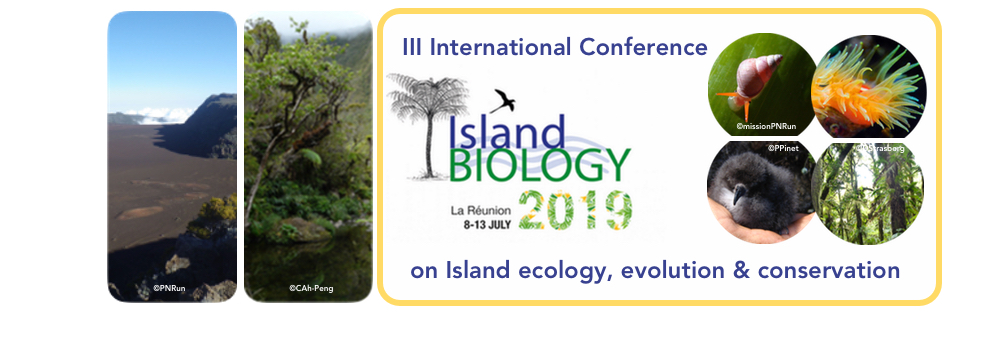Ecological communities on islands are composed of subsets of species pools from colonizing “mainland” sources. On oceanic archipelagos such as the Galapagos Islands, marine faunas derive from multiple biogeographic sources and occupy a broad range of ecological niches. It is unclear which biogeographic and ecological traits will confer population stability as environmental stressors become more extreme with climate change. We used a 6-year monitoring program of the wide oceanographic variation and relatively pristine fish communities of the Galapagos islands as a model system to study ecological outcomes and population dynamics in response to variation in environmental stress occurring at different spatio-temporal scales. In response to a local, high-frequency stress (wave exposure), we found that speed of locomotion dictates the ability of herbivores to navigate high wave exposure. Fast-moving herbivorous fishes alternate between feeding patches and refuges from stress at a higher frequency than the return time of extreme wave-induced flow speeds. At these small (ecological) spatio-temporal scales, mobility is the factor that best predicts a species' ability to continue feeding and exerting top-down control of benthic communities under periodic environmental stress. Tracking reef fish population trajectories over 6 years in response to a regional, low-frequency stress (El Niño events), we compared the predictive capacity of factors directly related to physiological tolerance to climate change (biogeographic and phylogenetic effects) with traits indirectly related to the effects of climate change on limiting resources (trophic and habitat effects). Planktivores were extremely susceptible to population declines during El Niño, but showed remarkable resilience by bouncing back during the subsequent La Niña one year later. Species derived from Indo-Pacific and Panamic lineages were also mildly favored during El Niño relative to Peruvian species. Our results suggest that mobility is a key behavioral trait for stress avoidance in the short term, and that limiting resources (such as planktonic food) are a better predictor of the long-term response of marine fish populations to climate change than proxies of physiological tolerance to changing environmental conditions.
- Picture

 PDF version
PDF version

